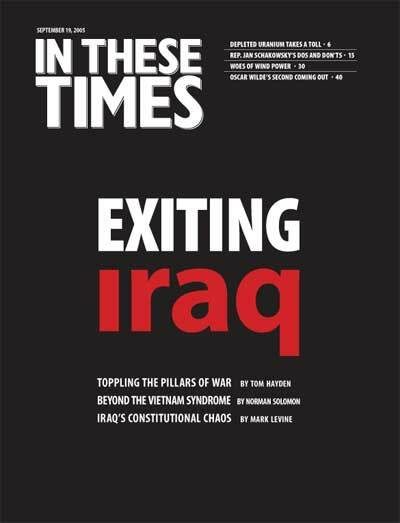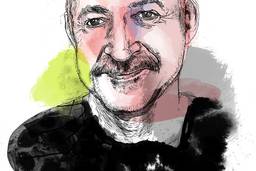Here is the question to the parents of American service men and women that the Bush administration never thought to pose, much less answer: Is the war in Iraq worth the life of your son or daughter?
“No,” was the answer Cindy Sheehan gave on August 6 as she walked down the road in Crawford, Texas, to Bush’s country estate. Her son Casey, 24, was killed in April 2004, within days of his arrival in Iraq.
By taking a public stand, Sheehan is playing the historic role of women in time of war. She has become an emblem of the sacrifice made by the mothers, wives and daughters who lose family members in battle. But unlike the Spartan mother, she did not tell her son: “Return from Iraq victorious or dead.” Instead, she used her loss to make Americans pause to consider whether the deaths of Casey and his fellow soldiers – as In These Times went to press, 1,852 and counting – has been worth it. In essence, she broke through the media’s monotonous recitation of daily deaths to put a human face on the tragedy.
Lt. Col. Dave Grossman writes in his book, On Killing: The Psychological Cost of Learning to Kill in War and Society:
It is so much easier to kill someone if they look distinctly different than you. If your propaganda machine can convince your soldiers that their opponents are not really human but are ‘inferior forms of life,’ then their natural resistance to killing their own species will be reduced.
While his statement relates in obvious ways to the demon “terrorists” with whom we are at war, it applies more subtly to all victims of the war in Iraq – a war for which the administration’s propaganda machine has established numerous rules on what can and cannot be shown. For example, photographing wounded soldiers has been effectively prohibited.Standing between the American public and the war’s grim reality are the news organizations that, in exchange for embedded status, have accepted White House rules for journalistic engagement. In effect the major media organizations are telling soldiers: Showing your blood and toil is less important than securing our front-row seats on the battlefield.
The administration realizes the threat Sheehan poses. In the ’60s, public sentiment against the Vietnam war began to turn when millions of Americans began to question whether the war’s human costs, of which they had an unimpeded – rather than embedded – view, were worth it.
Consequently, it’s no surprise that Sheehan has been has been roundly attacked by Bush administration proxies. Ann Coulter accused Sheehan of “engaging in Stalinist agitprop.” Rush Limbaugh described Sheehan and her supporters as “a bunch of miserable, angry people exploiting death.” Falsehood and distortion are their stock and trade.
Before he was promoted to the job of New York Times executive editor, Bill Keller had this to say about the so-called “intelligence failures” on Iraq: “The truth is that the information-gathering machine designed to guide our leaders in matters of war and peace shows signs of being corrupted. To my mind, this is a worrisome problem, but not because it invalidates the war we won [sic]. It is a problem because it weakens us for the wars we still face.”
Not quite. What weakens us is a media that aids and abets such corruption by failing to hold leaders responsible for their lies, a media that is unwilling to provide an honest portrayal of all that the war has cost us.
At the recent National Conference for Media Reform, Bill Moyers said, “A free press is one where it’s OK to state the conclusion you’re led to by the evidence.”
And at the moment, all evidence points to the fact that the war in Iraq, with its horrendous cost of human life, has been a tragic mistake.
It’s time to end the war.
Joel Bleifuss, a former director of the Peace Studies Program at the University of Missouri-Columbia, is the editor & publisher of In These Times, where he has worked since October 1986.









